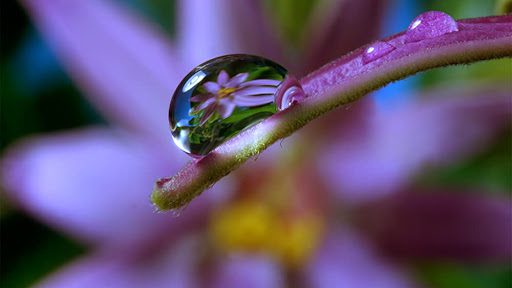I’ve taken to standing outside underneath our porch’s overhang and listening, waiting for movement and stillness, looking for color contrasts and shadows, watching for birds or squirrels to emerge. The wind dances through the trees and tall grasses that have turned tan, drained of its chlorophyll. I find myself sighing deeply, filling my lungs with the cold, crisp air. Everything is still moving, even as it has been rooted here for decades, still growing and evolving, blooming and dying. I don’t need to know in this moment the particular species of tree. I don’t need to mow the lawn. I don’t need to dig into where the winter birds are nesting or why the squirrels desire to taunt my dogs.
It is enough to just take it in.
Moving Art: What to Expect
I stumbled upon the Netflix TV series Moving Art by accident. I meant to watch The Great British Baking Show but hit Play on the row above my obsessively watched shows (I think that’s the actual category name) instead. Moving Art is brought to viewers by filmmaker Louie Schwartzberg. Unlike other documentaries, Moving Art has no narration, just soothing music to accompany the gorgeous imagery captured by Schwarzberg. Schwartzberg used time-lapse, high-speed, and macro cinematography techniques to capture the many dazzling corners of our planet. There are three seasons of the show available on Netflix.
In Moving Art, viewers aren’t told what to think about the landscapes and creatures, they aren’t given any additional information about their habits and instincts, they aren’t fed any interesting facts or doomcasting about how near a species is to extinction, they’re just given the experience, “a journey through time and scale, exploring different ecosystems from desert flowers to Big Sur to Galapagos to Tahiti” (from movingart.com).
Finding the Love: Faithifying Your Viewing
I am the sort of person who likes to know stuff. Curiosity about the world fuels my daily writing projects. There’s always more to learn about how the world works and how interconnected we are with one another and with the creatures and plants and minerals in the natural world.
It is good to pursue knowledge and wisdom—the Teacher in Proverbs says so. But the Teacher in Ecclesiastes says both wisdom and folly are meaningless, a “chasing after the wind,” and that all that’s really left to do is eat, drink, and find satisfaction in the work God has given you to do (Ecclesiastes 2). How do we reconcile these two wisdom teachers?
There are so many challenges and broken places in the world that need our attention, so many things to learn more about, but sometimes that pursuit of knowledge never enters our hearts, it never turns us toward compassion and empathy. If I know things for the sake of knowing things, what use is knowing anything if it doesn’t compel me to greater compassion and love for this world and my God? “If I have the gift of prophecy and can fathom all mysteries and all knowledge, and if I have a faith that can move mountains, but do not have love, I am nothing,” writes Paul to the Corinthian church.
In our hustle and scramble for more of whatever we think will fill our souls, the Psalmist urges us, “Be still, and know that I am God” (Psalm 46:10 NIV). In the stillness, we begin to see what has been happening all around us forever, and it is the movement and presence of the Spirit of God, hovering over the waters, moving in the wind, orchestrating the tilt of the Earth and the combining of chromosomes in a mother’s womb and the rhythmic rush of the crashing waves and the constant swish of your beating heart. In the stillness, we experience reverence, awe, a sense of our smallness and a sense of God’s grandness. We are compelled to worship.
Art speaks to the heart. Fyodor Dostoevsky claimed that “beauty will save the world,” that our attempts to reveal and unveil the artfulness of our Creator to others will inspire love and compassion for creation in those who witness it. When we love something or someone, we are compelled to want to be with them, to adore them, and to take care of them.
Perhaps in this way, Moving Art will compel us to a greater reverence for the work of our Creator and stir in us a deeper awareness of our relationship with that Creator and his prized creation.





 Copyright
2024
Root and Vine
Copyright
2024
Root and Vine